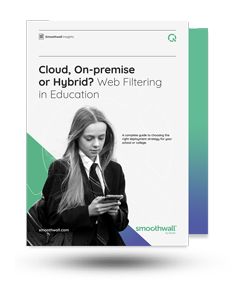When reviewing your web filtering arrangements, it’s a good idea to revisit the statutory requirements and guidelines. Below is a refresher of the key points to consider and ensure you stay up to date.
Ofsted inspectors will expect to see:
- “Appropriate filters and proactive monitoring systems…in place to protect learners from potentially harmful online material”.
The Keeping Children Safe in Education (KCSIE) statutory document explains this requirement in detail by mentioning:
- Filtering should be “age appropriate”.
- Overblocking should not lead to “unnecessary restrictions” around teaching and learning.
These requirements make it clear that whilst it is essential for schools and colleges to create optimum protection from the safeguarding and security risks that the internet exposes, there is an expectation for establishments to ensure that their filtering provides a granular approach that allows appropriate access depending on the age of students.
UK Safer Internet Centre
KCSIE points to the UK Safer Internet Centre for schools and colleges to refer to when choosing their filtering solution. Within this guidance, it is suggested that all schools and colleges should have effective filtering that identifies both illegal and inappropriate content.
The definitions for measurements include:
Illegal content
- Illegal images – Providers should be members of the Internet Watch Foundation (IWF). Access is blocked to illegal child abuse images and content.
- Unlawful terrorist content – Providers should incorporate police-checked lists for unlawful content.
Inappropriate content
- Discrimination: Any form of prejudice on grounds of race, religion, age or sex.
- Drugs/substance abuse: Anyone displaying or promoting the illegal use of drugs or substances.
- Extremism: Anyone promoting terrorism and terrorist ideologies, violence or intolerance.
- Malware/hacking: Any form of compromising of systems including anonymous browsing and other filter bypass tools as well as sites hosting malicious content.
- Pornography: Displays of sexual acts or explicit images.
- Piracy and copyright theft: Illegal provision of copyrighted material.
- Self-harm: Promotion or display of deliberate self-harm (including suicide and eating disorders).
- Violence: Any display or promotion of the use of physical force intended to hurt or kill.
For more information, the full Keeping Children Safe in Education statutory guidance can be found here.
When it comes to complying with the statutory requirements and guidelines, keeping up to date with the latest technology can be difficult. However, to keep your students safe, you’ll need to consider how the way your web filter is deployed could impact your compliance.
Whether your filter is deployed on-premise, in the cloud or through a hybrid approach is up to your school, college or MAT, but it’s essential to have the facts before making your decision.

Cloud, On-premise or Hybrid?
If you’re currently having the cloud, on-premise or hybrid debate, download our free whitepaper – where we compare the pros and cons of each, to help you make your decision.
Download guide




